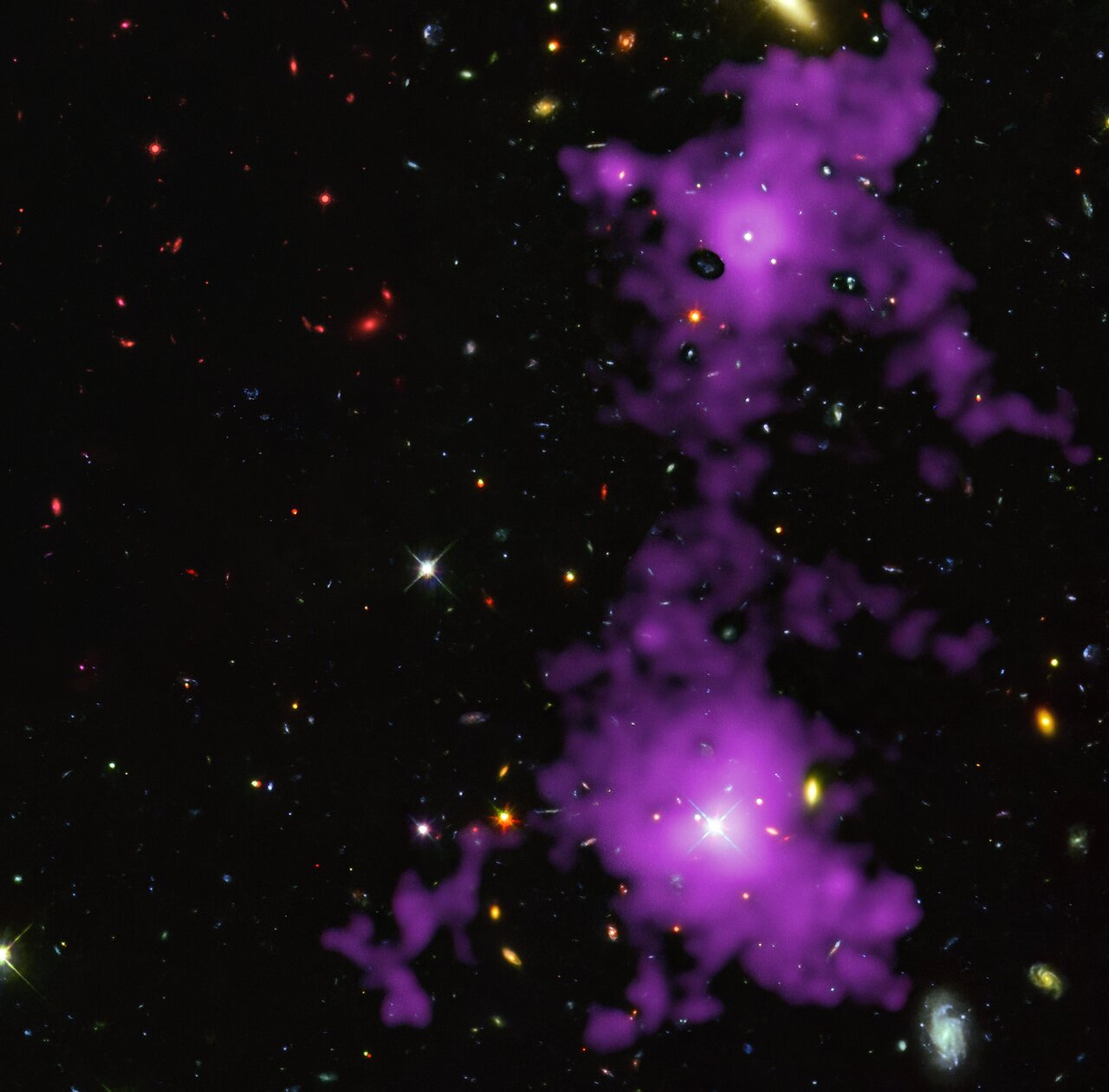Cosmo Cosmic Filament
Is there an invisible web of dark matter surrounding us? Its influence can be observed across the cosmos, but the web remains unseen… for the most part. This Picture of the Week shows the clearest image yet of a filament from this cosmic web. The filament was imaged with ESO’s Very Large Telescope, and is shown here in purple overlaid on a background image from the NASA/ESA Hubble Space Telescope. Made of gas clumped together by the influence of dark matter, the filament stretches out for 3 million light-years, connecting two distant galaxies in the early Universe.
Around 85% of all matter in the Universe is actually dark matter. Dark matter is invisible, but the gas around it is not. This gas glows extremely faintly though, making these structures very difficult to observe. But after about 150 hours of observations, a team of astronomers led by Davide Tornotti, a PhD student at the University of Milano-Bicocca in Italy, managed to take this sharp image of a cosmic filament. This was possible thanks to the exceptional sensitivity of the MUSEinstrument at the VLT, which has become a workhorse instrument at imaging the cosmic web.
The light from this filament took 11 billion years to reach us, and it shows exactly what theory predicted. In the early Universe, filaments of dark matter could have created a large web that entangled gas through their gravitational pull. Once gas accumulated at the intersection between filaments, it would have provided the fuel necessary to form galaxies. As we observe more of these mysterious filaments, what else will we find trapped within this dark web?
